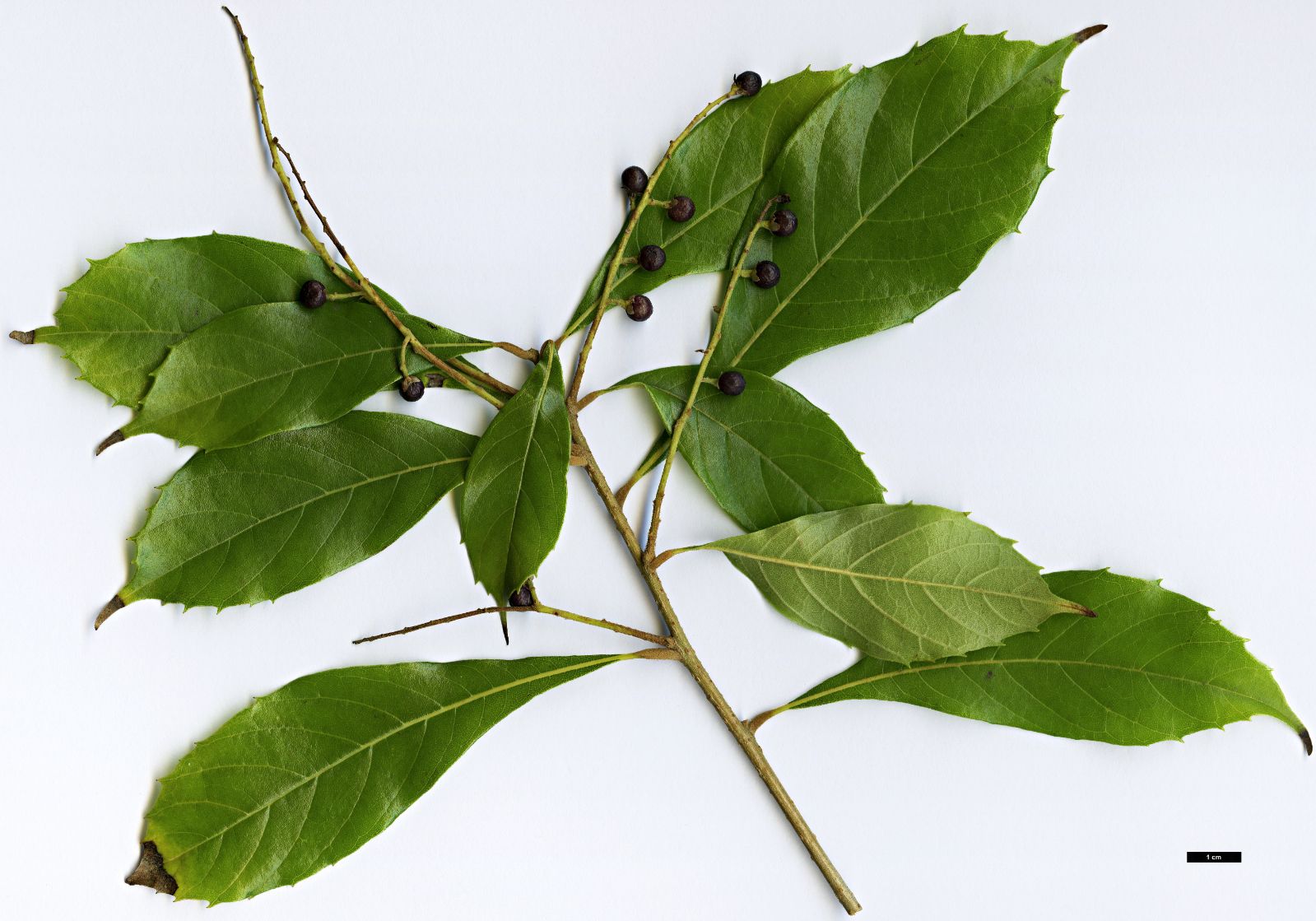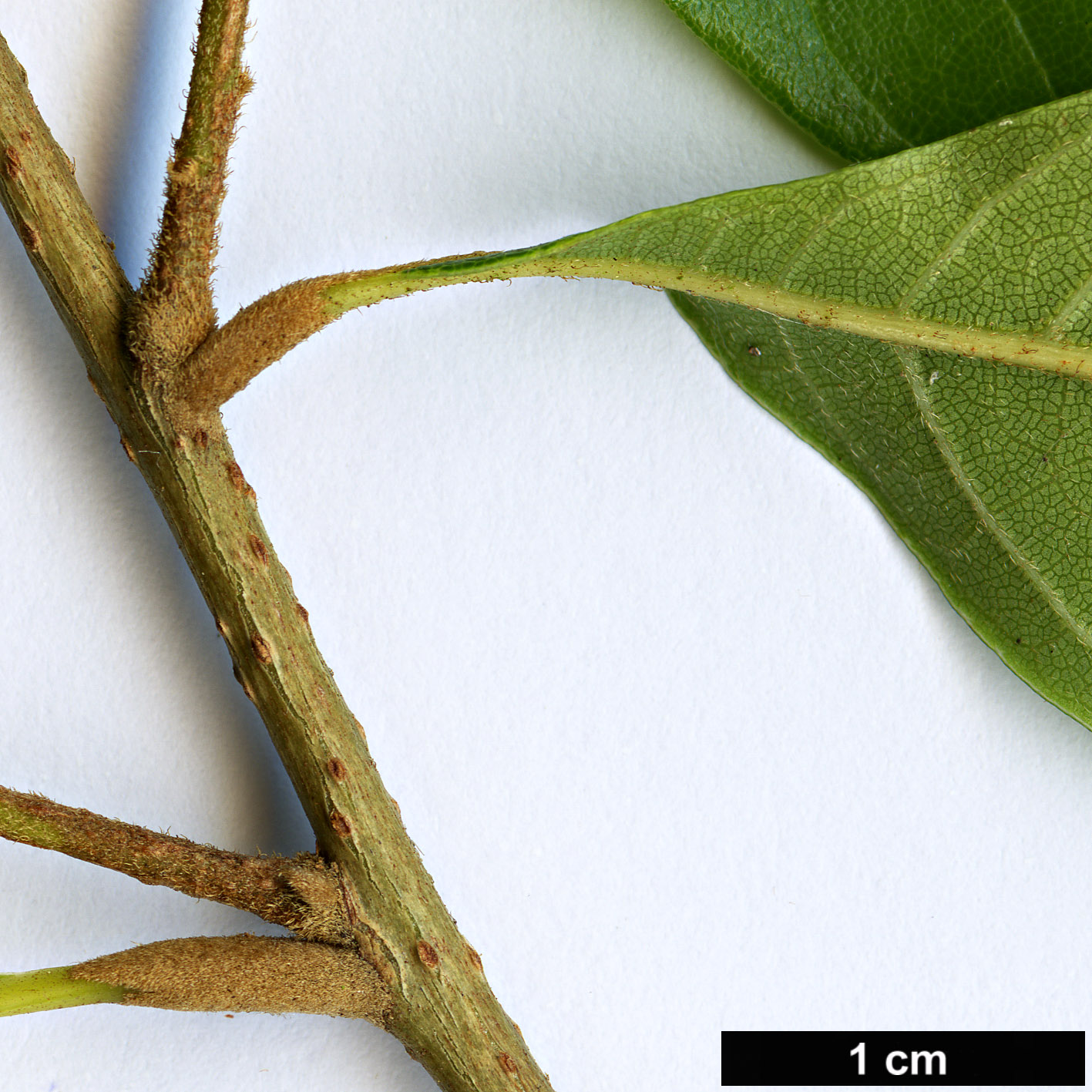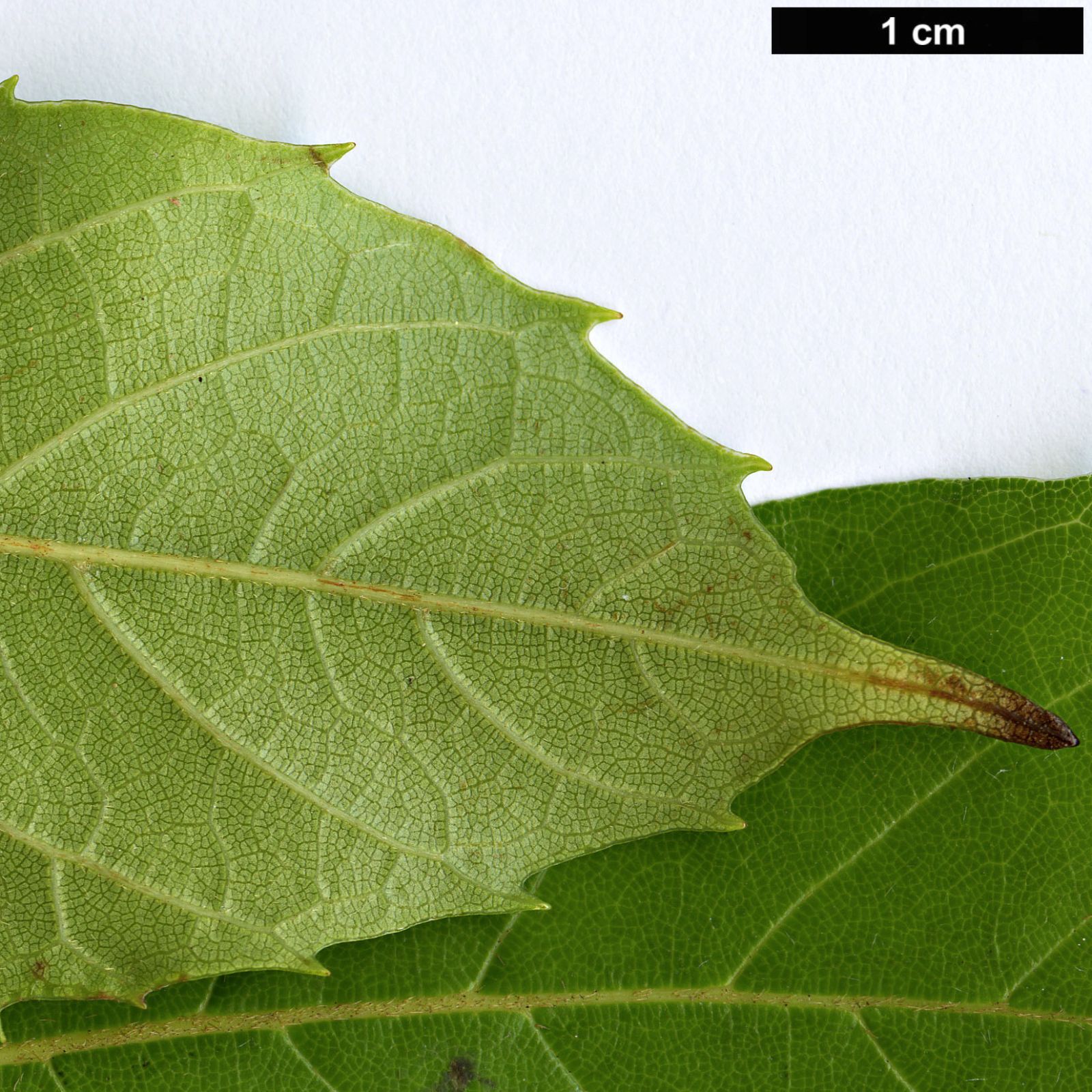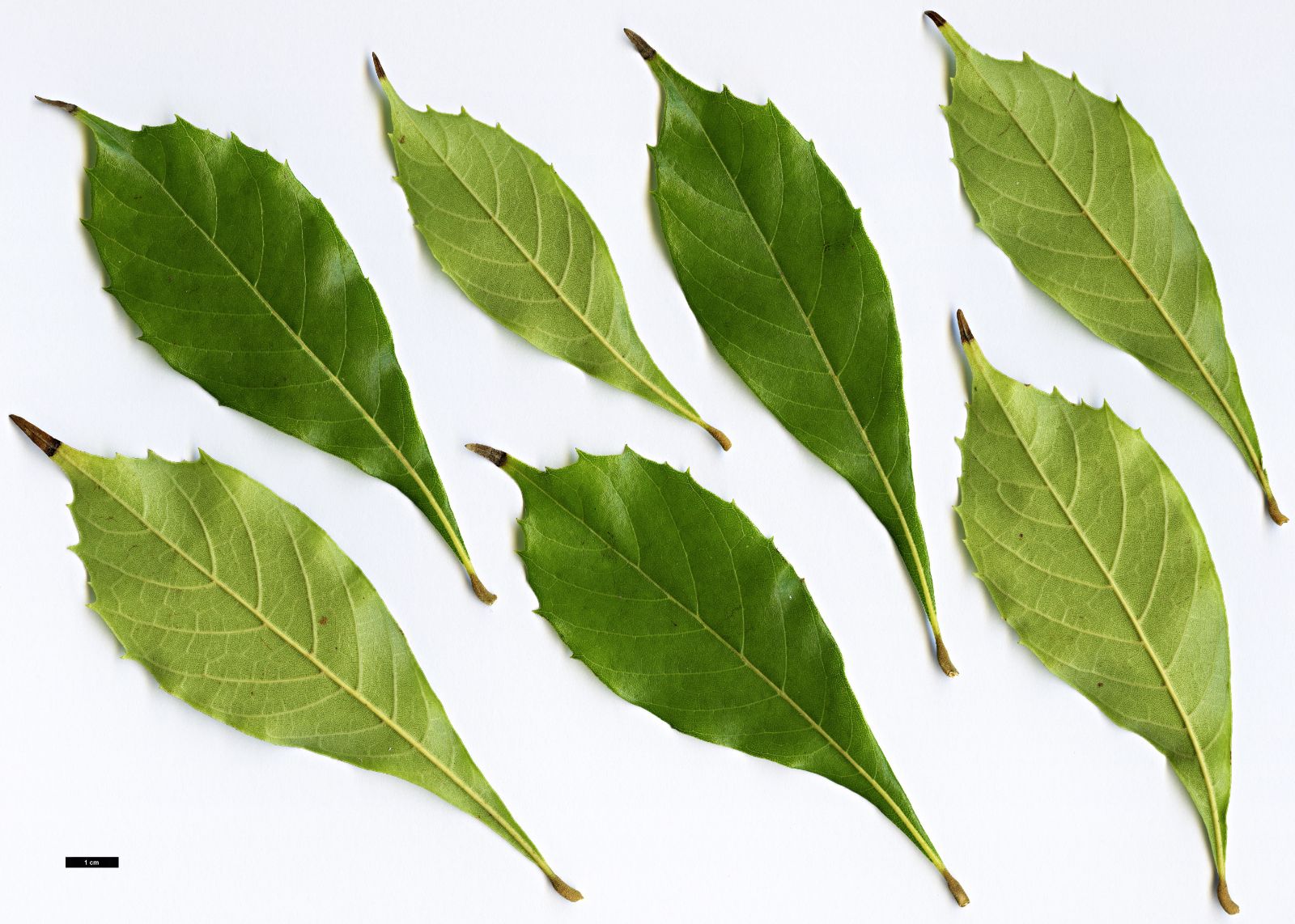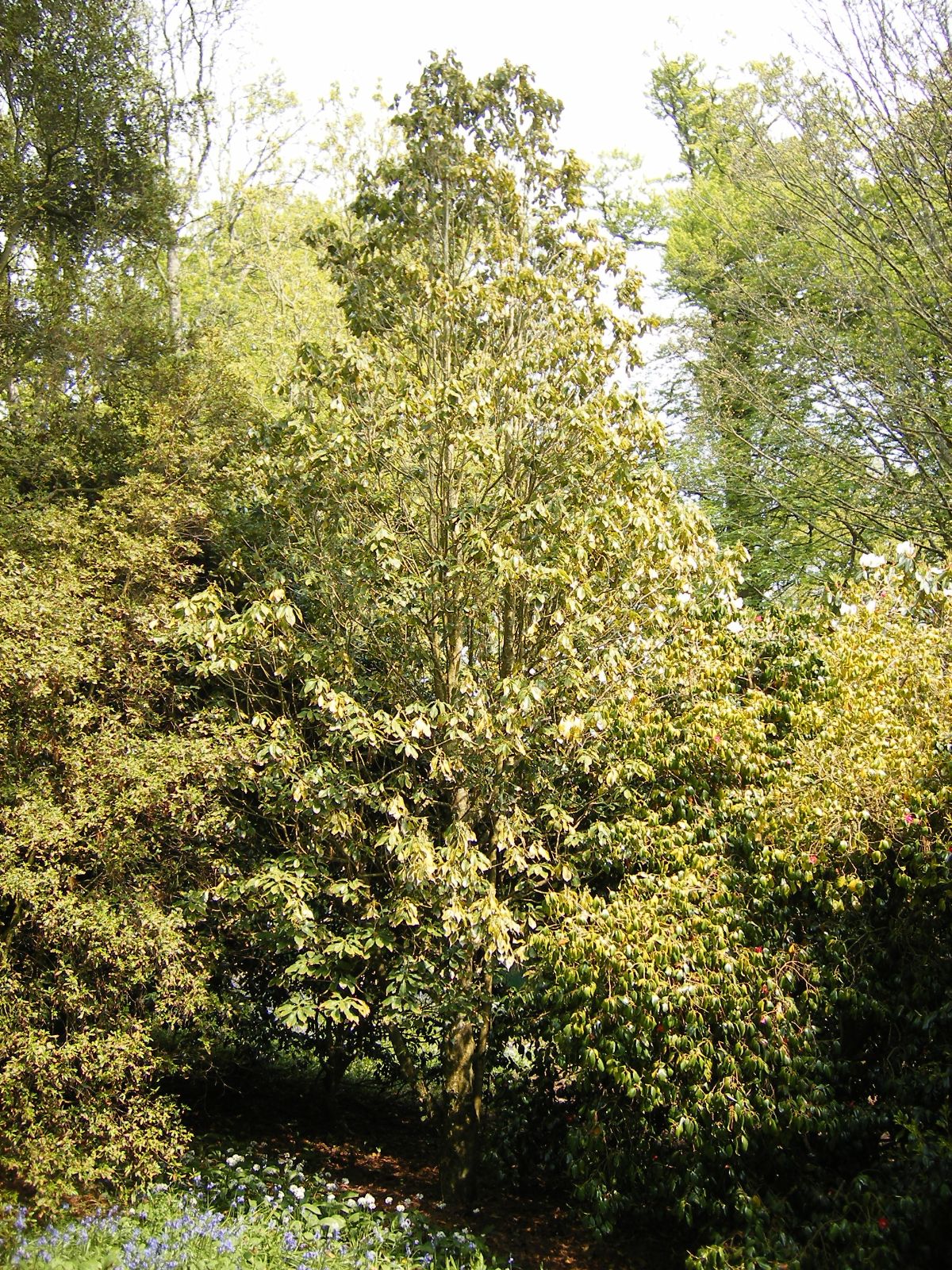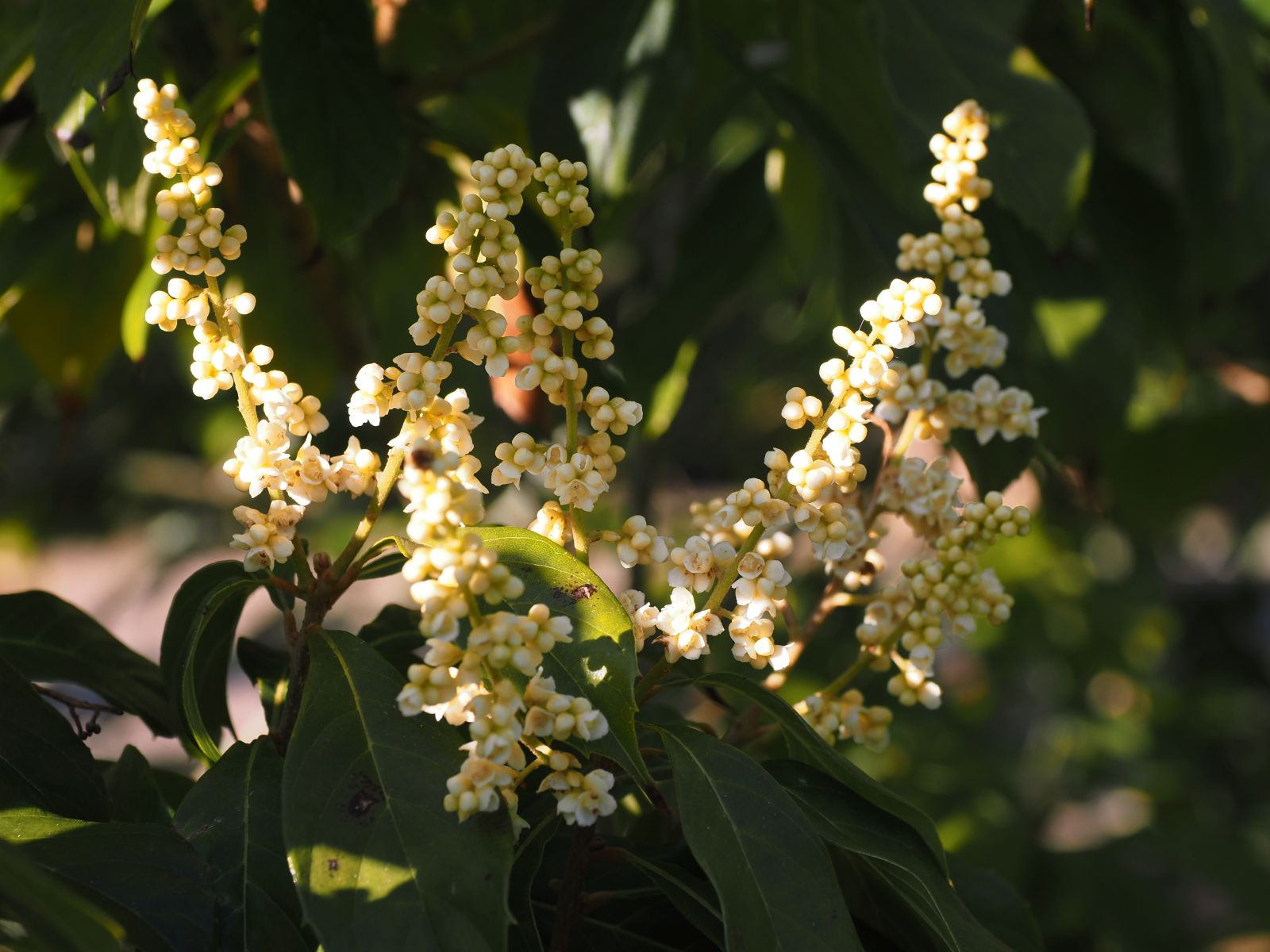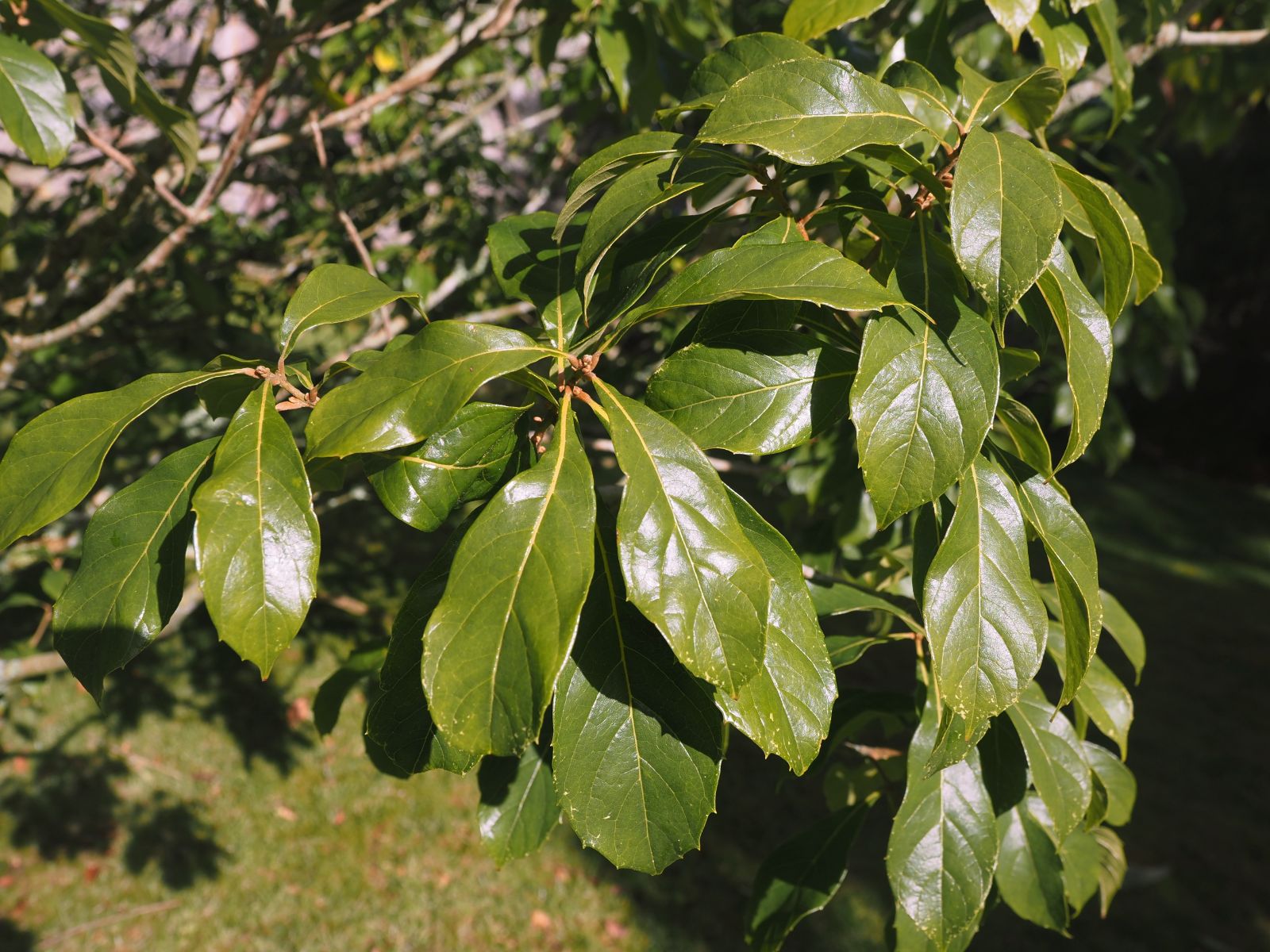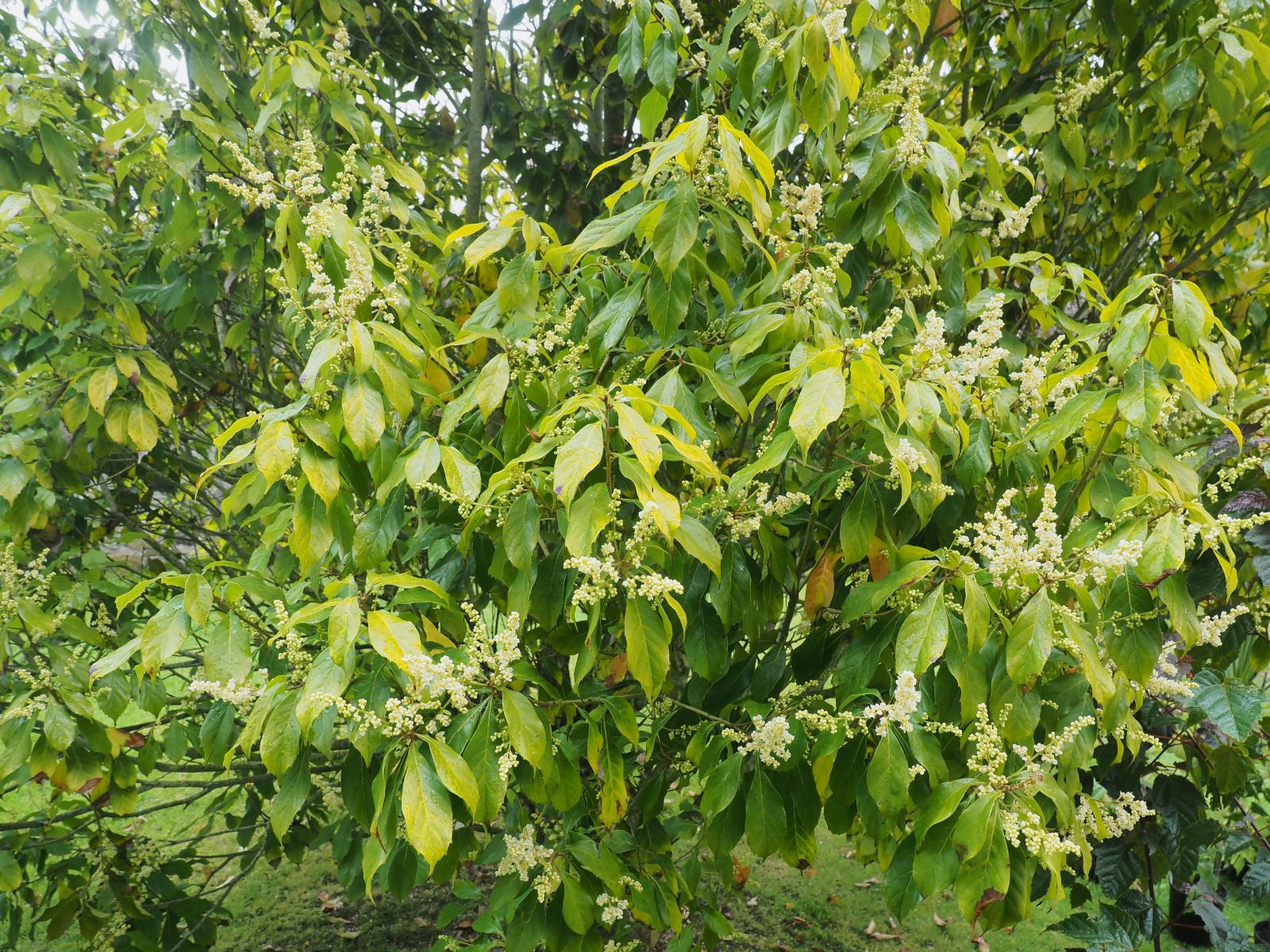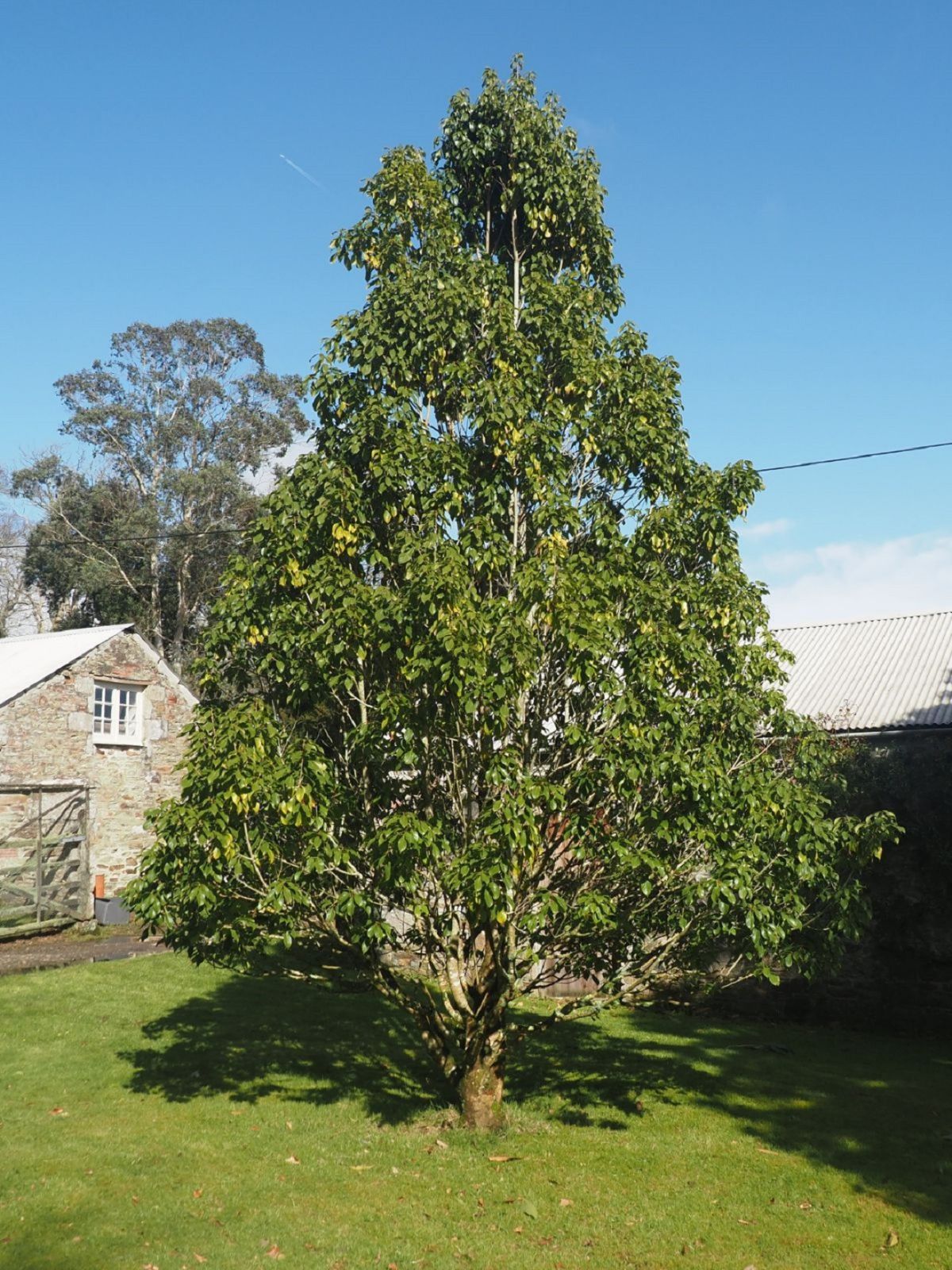Meliosma yunnanensis
Sponsor
Kindly sponsored by
Lady Diana Rowland
Credits
Owen Johnson (2022)
Recommended citation
Johnson, O. (2022), 'Meliosma yunnanensis' from the website Trees and Shrubs Online (treesandshrubsonline.
Genus
Synonyms
- Meliosma fischeriana Rehder & E.H. Wilson
- Meliosma simplicifolia subsp. yunnanensis (Franch.) Beusekom
- Meliosma yunnanensis var. fischeriana (Rehder & E.H. Wilson) C.Y. Chang
A large evergreen tree in the wild (to 30 m). Bark grey, mostly smooth. Young twigs sparsely pubescent. Leaves simple, often in terminal clusters, narrowly obovate with a long, narrowly cuneate base, 4–15 × 2–6 cm, leathery and glossy, hairless above and sparsely hairy underneath; veins in just 6–10 pairs, curving in from the margin but reaching it and (in the upper half) serving a small spiny tooth; petiole 6–10 mm. Flower-head terminal or in the upper joints of shoots in summer, 4–10 cm long, narrow, rather erect, branched only 2(–3) times, with yellowish pubescence on the stems. Sepals 5. Petals white or yellowish, ciliate. Fruit slightly tangerine-shaped, 3–5 mm wide, set with scattered netlike strips and with a distinct midrib (Guo & Brach 2007; De Langhe 2022).
Distribution Bhutan Myanmar In mountains in the north China C Guizhou, Sichuan, E and S Xizang, Yunnan India In the Himalaya Nepal
Habitat Evergreen broad-leaved forests, to 3000 m asl in China.
USDA Hardiness Zone 9
RHS Hardiness Rating H3
Conservation status Not evaluated (NE)
Meliosma yunnanensis appears to be the only evergreen member of its genus with a long if poorly-documented history of cultivation in the west. Two trees in two great early 20th century Cornish gardens, Caerhays Castle and Trewithen, were grown for a long time as the subtropical M. simplicifolia subsp. pungens, and are assumed to derive from the same undocumented introduction; in 2022 the Caerhays tree was reidentified by Jan de Langhe and Frits van Beusekom as M. yunnanensis (De Langhe 2022).
Both have grown into multi-stemmed but quite shapely trees with narrow spire-like crowns, and carry their leaves at an elegant and consistent angle, rather like the foliage of Aucuba japonica. Both occupy sheltered locations; the Trewithen tree was 11 m tall in 2014 (Tree Register 2022), and the Caerhays example had died back to about 7 m by this time. (It too was 11 m in 1984, unless this measurement referred to a second, lost example; its girth was greater then than in 2006, but this could be explained by the loss of a largest stem in the interim. Certainly, their slow growth indicates that these two are quite old and potentially long-lived trees.) The Caerhays plant flowered for the first time in living memory in June 2019 (Williams 2019), and by 2021 was looking happier than it had for many years (Williams 2021). One younger example at Caerhays has recently died (Williams 2019); a scion from the old Caerhays tree planted in an open spot at Tregrehan in the same county in 1999 grew rather slowly to 3 m by 2014 (Tree Register 2022), but has since luxuriated (Williams 2022). Material from Caerhays propagated at Burncoose Nurseries is presumably also the origin of another Cornish tree labelled as Meliosma [simplicifolia subsp.] pungens, at the Pinetum Gardens (Pine Lodge), which was 4.5 m tall by 2014 (Tree Register 2022), but an attempt to grow similar material in the warmer, drier conditions of the garden of Buckingham Palace in central London failed (M. Lane pers. comm.). Further study would be needed to show whether any of these other plants might indeed have been M. pungens rather than M. yunnanensis.
M. yunnanensis is probably also present in a few continental European gardens (J. De Langhe pers. comm.). However, a plant illustrated as Meliosma yunnanensis in asianflora.com, the website of the French plant-hunter and nurseryman Cédric Basset (Basset 2022), is very different and has leaves with many closely parallel veins.

